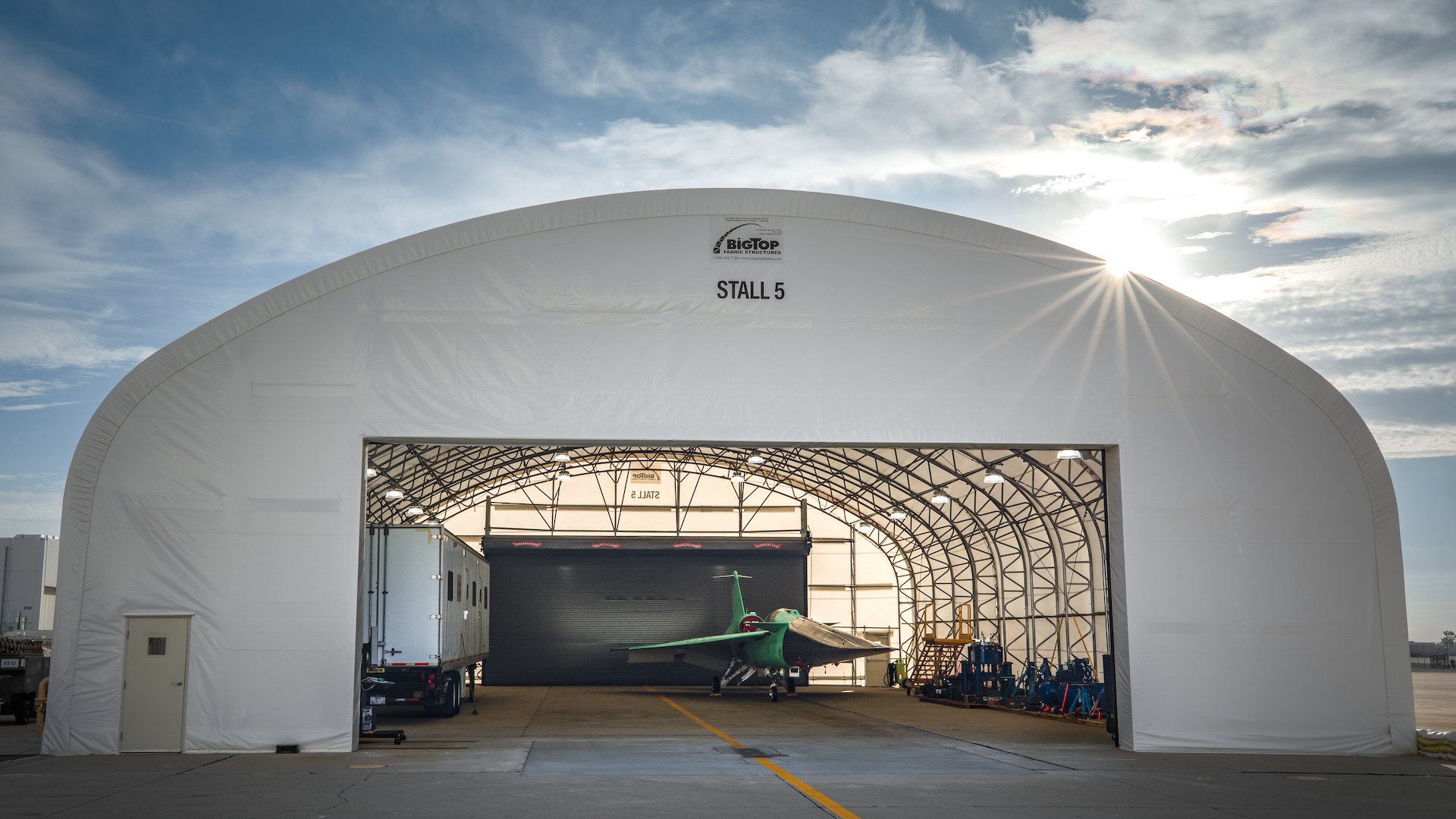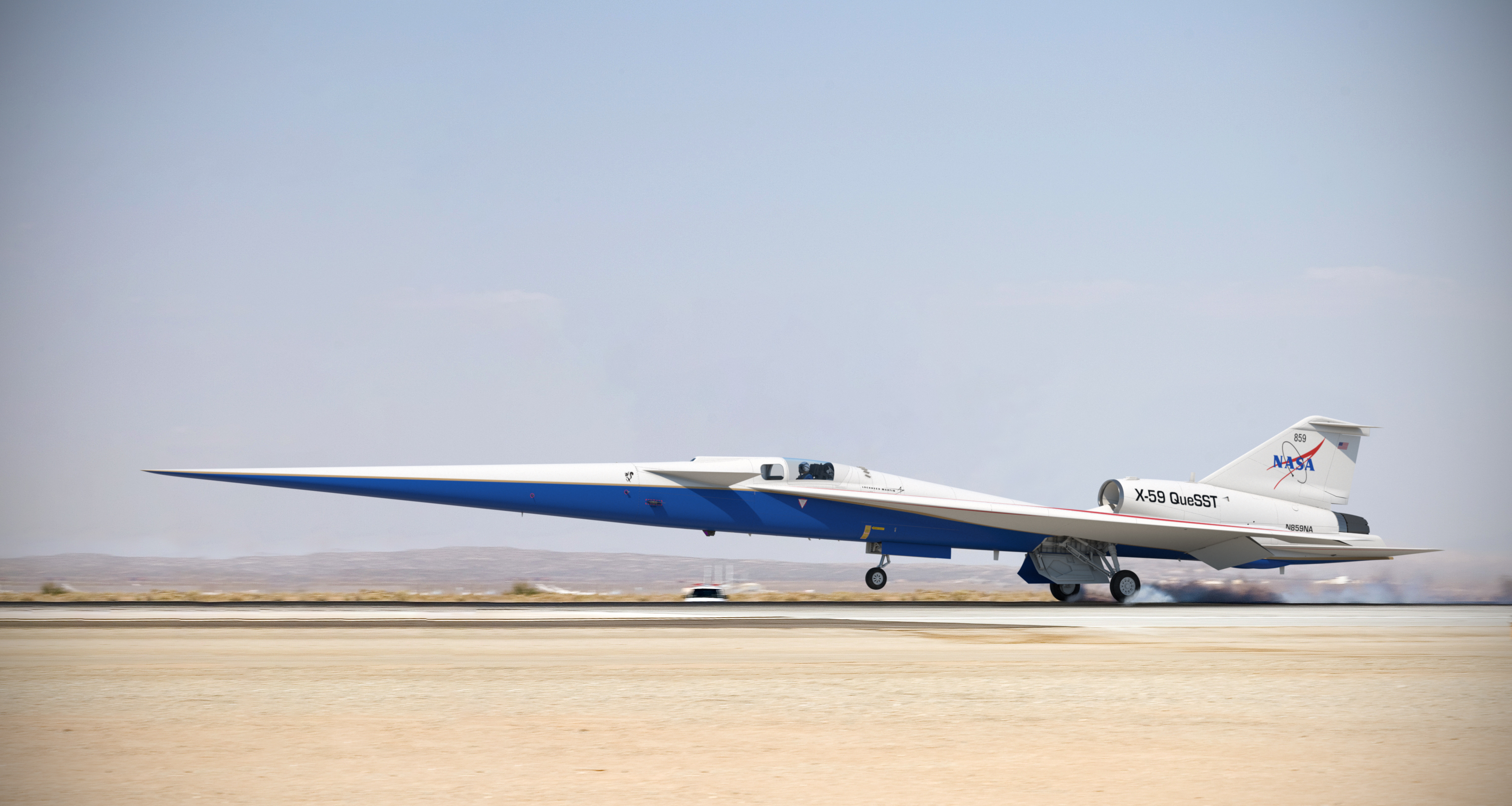NASA and Lockheed Martin are finally ready to unveil the new X-59 Quesst, a supersonic jet designed to break the sound barrier without creating a thunderous sonic boom.
The X-59 Quiet SuperSonic Technology (Quesst) jet has been under construction at Lockheed Martin's "Skunk Works" facility in Palmdale, California since 2019. The experimental X-59 Quesst is designed to fly at supersonic speeds and reduce the typical sound of sonic booms, lowering the volume down to a "thump" similar to the sound of a car door slamming. NASA says the aircraft could help reshape regulations that currently prohibit supersonic flight over populated areas due to disruptions that sonic booms can cause.
On Friday, Jan. 12, beginning at 4 p.m. EST (2100 GMT), NASA will host a free livestream as it rolls the painted X-59 out of the hangar for the first time. You can watch it here at Space.com courtesy of NASA, or on NASA+ or NASA TV. NASA is even inviting the public to host watch parties for the rollout, complete with agency-provided printable invites and free STEM toolkits for educators.
Related: Watch NASA's sci-fi-looking X-59 'quiet' supersonic jet roll out of the hangar (video)

The X-59 has been rolled out in front of cameras once before, in August 2023. But that was before the jet had gone into the paint barn for its final red, white and blue paint job, or livery.
During that rollout, the striking and unique geometry of the X-59 was on full display. The aircraft features a sharp, elongated beak-like nose section that measures 38 feet (11.5 meters) in length. The nose section will help shape the shock waves the aircraft produces during flight, NASA said in a 2021 statement.

That nose also means pilots flying the X-59 can't see out of the forward windscreen — because it doesn't have one. Instead, pilots use what NASA calls the External Vision System, or XVS, to see in front of the aircraft. This system uses a forward-facing camera, a cockpit-mounted display screen and custom image processing software to "create an augmented reality view of the X-59 pilot's forward line-of-sight along with graphical flight data overlays," according to a 2019 statement from the agency.

The 99.7-foot-long (30 m), 29.5-foot-wide (9 m) aircraft is designed to reach a speed of Mach 1.4, or 925 mph (1489 kph), while flying at an altitude of 55,000 feet (16,764 m). The X-59 is powered by a single engine built by General Electric Aviation.
Once it's ready for flight, the X-59 will carry out a research campaign in which it will fly over select residential areas in order to collect data on how people below experience and react to the quieter sonic booms it creates.
NASA will then use that data to seek approval for commercial supersonic flights from regulatory agencies such as the Federal Aviation Administration.







